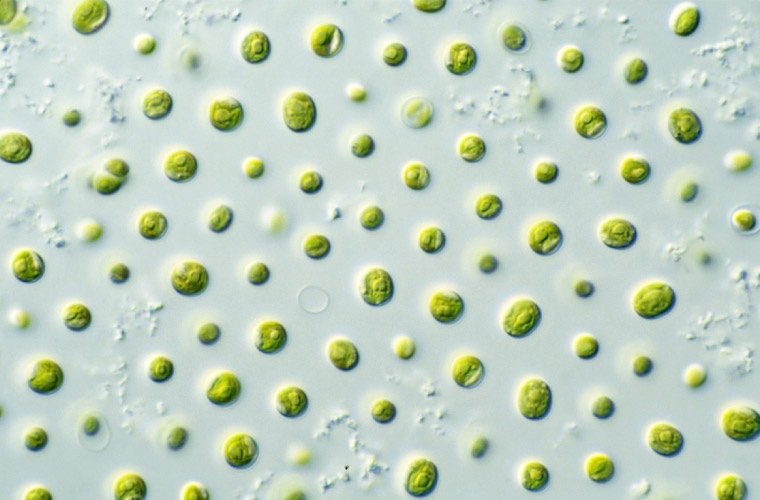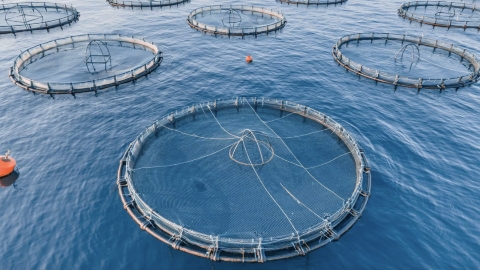
The microalga Nannochloropsis gaditana is a natural source of omega-3 fatty acid (EPA), antioxidants, pigments and other bioactive compounds that can enhance the health and performance of gilthead seabream (Sparus aurata). Its inclusion in aquafeeds has been studied for its potential as a functional ingredient capable of strengthening the immune system and reducing the need for synthetic additives.
However, its effectiveness depends on the type of processing applied: when used in hydrolysed form, it improves digestibility and immune response; whereas in its raw form, with the cell wall intact, it may trigger excessive immune stimulation and reduce fish survival under sanitary challenge conditions.
This finding comes from a recent study by a team of fish physiology and immunology researchers under the title “Immunomodulatory effect of raw and hydrolysed Nannochloropsis gaditana diets in juvenile gilthead seabream”, which analysed how the processing of this microalga affects the immune response and disease resistance of gilthead seabream when exposed to bacterial infection.
According to the authors, the main difference between the two diets lies in the bioavailability of functional compounds. Enzymatic hydrolysis partially breaks down the cell wall of Nannochloropsis gaditana, facilitating the release of its lipids, pigments and antioxidants, which in turn allows for more efficient absorption and a balanced immune response. By contrast, the raw microalga, whose cell wall remains intact, may induce hyperactivation of the intestinal and hepatic immune system, which over time can prove counterproductive for the fish.
The trials were conducted with juvenile gilthead seabream fed for 90 days on diets containing either raw or hydrolysed microalga, followed by a challenge with Vibrio angullarum, a common pathogen in marine aquaculture. The results showed that fish fed the hydrolysed microalga exhibited significantly higher survival rates and a more stable immune response, while those fed the raw form displayed greater mortality and signs of immune overstimulation.
The researchers conclude that enzymatic hydrolysis is an effective tool to enhance the functional value of microalgae in seabream feeds, improving digestibility while preventing adverse effects.
In this regard, they recommend that feed formulators and functional ingredient producers prioritise the use of processed microalgae to ensure product safety and efficacy. They also suggest that further large-scale studies be undertaken to confirm these effects under commercial farming conditions.
In short, the study highlights that the potential of Nannochloropsis gaditana as a functional ingredient depends not only on its composition but also on how it is processed. When properly treated, it can contribute to a more sustainable and healthier aquaculture sector; however, its use in raw form may limit – or even reverse – the expected benefits.
Reference:
Méndez-Vivancos, F., Sáez, M.I., Galafat, A., Alarcón-López, F.J., Martínez, T.F., Arizcun, M., & Chaves-Pozo, E. (2025). Assessment of the immunomodulatory effect of using raw or hydrolysed Nannochloropsis gaditana in diets for juvenile gilthead seabream specimens. Aquaculture Reports, 45, 103163



